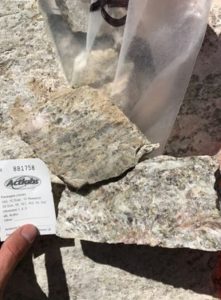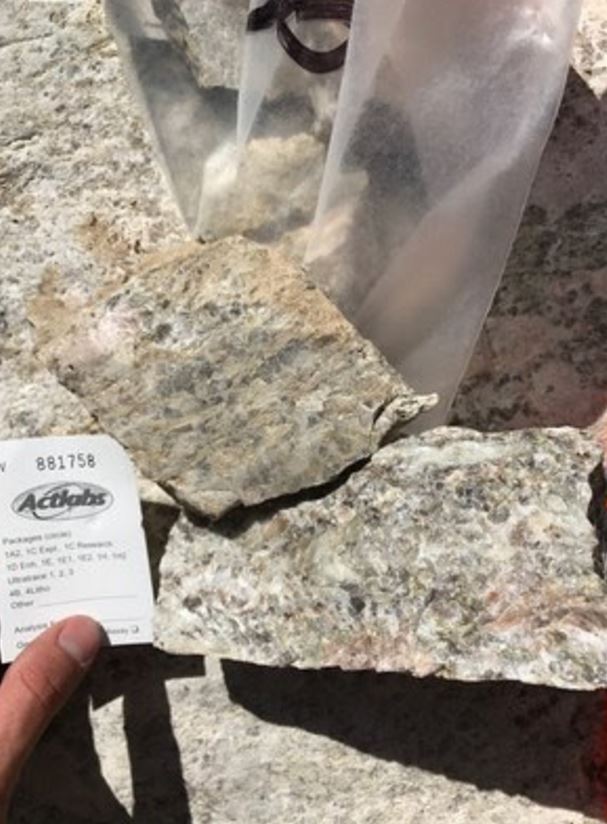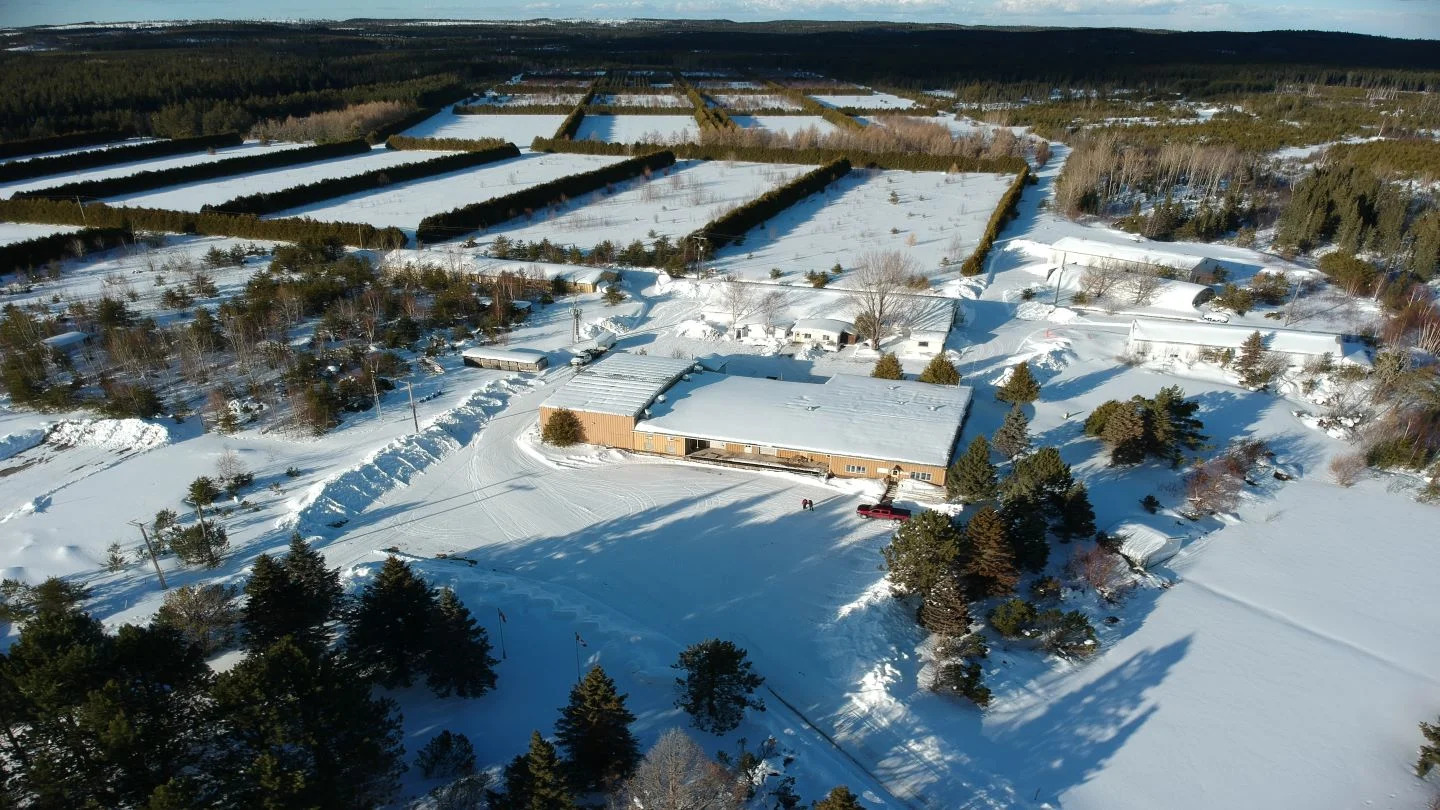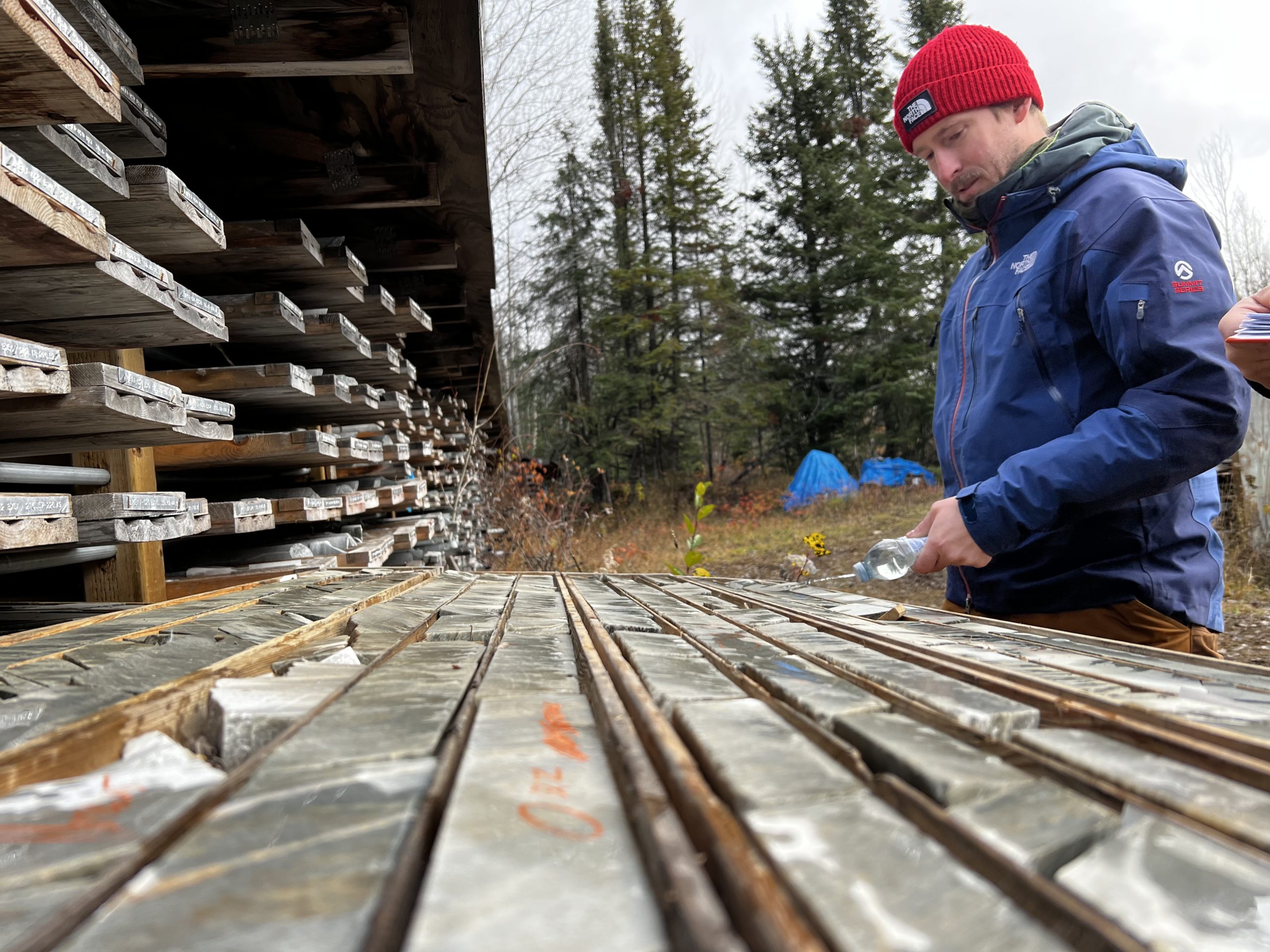ONTARIO – Vancouver-based
Rock Tech Lithium is testing its 100% owned Georgia Lake property 145 km northeast of Thunder Bay. The local pegmatites contain lithium- and rare metals-bearing spodumene at many locations in the area.
[caption id="attachment_1003719623" align="alignright" width="335"]
 Core from the Georgia Lake lithium project near Thunder Bay. (Credit: Rock Tech Lithium)
Core from the Georgia Lake lithium project near Thunder Bay. (Credit: Rock Tech Lithium)[/caption]
Rock Tech concentrated on sampling outcrops, locating historic drill collars, and completing georeferencing surveys in the Aumacho and McVittie regions.
“Both of these regions, Aumacho and McVittie, are host to multiple lithium-bearing pegmatites and historic resource estimates, said CEO Martin Stephan in a release. “Obtaining modern co-ordinates and proper locations will increase the effectiveness of follow up exploration work aimed at upgrading these historic estimates to NI 43-101 compliant resources in the future."
The potential of the Georgia Lake region was discovered in 1955, and it set off a three-year staking rush, but no mines were developed. The Aumacho region hosts at least three lithium-bearing pegmatites. Drilling in the 1950s led to a non-compliant estimate of 87,090 tonnes with an average grade of 1.5% lithium oxide (Li
2O). The McVittie region appears to host a stacked pegmatite system, with at least three, and perhaps four, lithium-bearing pegmatites. Drilling in this area was done in the 1980s.
Last year, Rock Tech drilled 4.0 metres of 2.9% Li
2O including 1.0 metre of 4.42% Li
2O and 5.0 metres of 1.9% Li
2O.
Interested readers are urged to examine the Aug. 14, 2017, news release that contains details about the Aumacho and McVittie regions. Click
here.

 Core from the Georgia Lake lithium project near Thunder Bay. (Credit: Rock Tech Lithium)[/caption]
Rock Tech concentrated on sampling outcrops, locating historic drill collars, and completing georeferencing surveys in the Aumacho and McVittie regions.
“Both of these regions, Aumacho and McVittie, are host to multiple lithium-bearing pegmatites and historic resource estimates, said CEO Martin Stephan in a release. “Obtaining modern co-ordinates and proper locations will increase the effectiveness of follow up exploration work aimed at upgrading these historic estimates to NI 43-101 compliant resources in the future."
The potential of the Georgia Lake region was discovered in 1955, and it set off a three-year staking rush, but no mines were developed. The Aumacho region hosts at least three lithium-bearing pegmatites. Drilling in the 1950s led to a non-compliant estimate of 87,090 tonnes with an average grade of 1.5% lithium oxide (Li2O). The McVittie region appears to host a stacked pegmatite system, with at least three, and perhaps four, lithium-bearing pegmatites. Drilling in this area was done in the 1980s.
Last year, Rock Tech drilled 4.0 metres of 2.9% Li2O including 1.0 metre of 4.42% Li2O and 5.0 metres of 1.9% Li2O.
Interested readers are urged to examine the Aug. 14, 2017, news release that contains details about the Aumacho and McVittie regions. Click
Core from the Georgia Lake lithium project near Thunder Bay. (Credit: Rock Tech Lithium)[/caption]
Rock Tech concentrated on sampling outcrops, locating historic drill collars, and completing georeferencing surveys in the Aumacho and McVittie regions.
“Both of these regions, Aumacho and McVittie, are host to multiple lithium-bearing pegmatites and historic resource estimates, said CEO Martin Stephan in a release. “Obtaining modern co-ordinates and proper locations will increase the effectiveness of follow up exploration work aimed at upgrading these historic estimates to NI 43-101 compliant resources in the future."
The potential of the Georgia Lake region was discovered in 1955, and it set off a three-year staking rush, but no mines were developed. The Aumacho region hosts at least three lithium-bearing pegmatites. Drilling in the 1950s led to a non-compliant estimate of 87,090 tonnes with an average grade of 1.5% lithium oxide (Li2O). The McVittie region appears to host a stacked pegmatite system, with at least three, and perhaps four, lithium-bearing pegmatites. Drilling in this area was done in the 1980s.
Last year, Rock Tech drilled 4.0 metres of 2.9% Li2O including 1.0 metre of 4.42% Li2O and 5.0 metres of 1.9% Li2O.
Interested readers are urged to examine the Aug. 14, 2017, news release that contains details about the Aumacho and McVittie regions. Click 




Comments